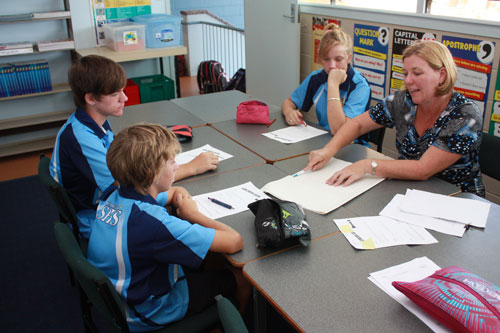English is one of the core components of our curriculum and all students engage with this subject in some form. There are opportunities for them to extend themselves as well as receive support from a range of staff.

English involves the reading and critical comprehension of texts (written, spoken, visual and multi-modal). This may involve analysing the language features and structure used in a text, considering the context in which it was written (author and time/place) or who the intended audience and what the text’s overall purpose is. In addition to analysing texts, students will also need to show their proficiency in writing and speaking in a range of text types including reports, speeches, short stories, essays, feature articles, individual and group performances and multi-modal presentations.
Students will be asked to create imaginatively, reflect on their place in society, persuade others and indicate how different texts – novels, poetry, films, documentaries, images, stories, web-sites – both support and challenge our cultural understandings.
Other languages (LOTE)
First and foremost, learning a language enables students to interact with others. They learn and practise how to organise their ideas, to select the appropriate words and tone, to look and listen to the response and to express their ideas and feelings. The communicative approach to learning LOTE (Languages Other Than English) ensures that meaningful communication such as asking for, getting and giving directions is the focus of classroom learning. Teachers also use the target language as much as possible, to give students the maximum opportunity to hear the language used in everyday communication.